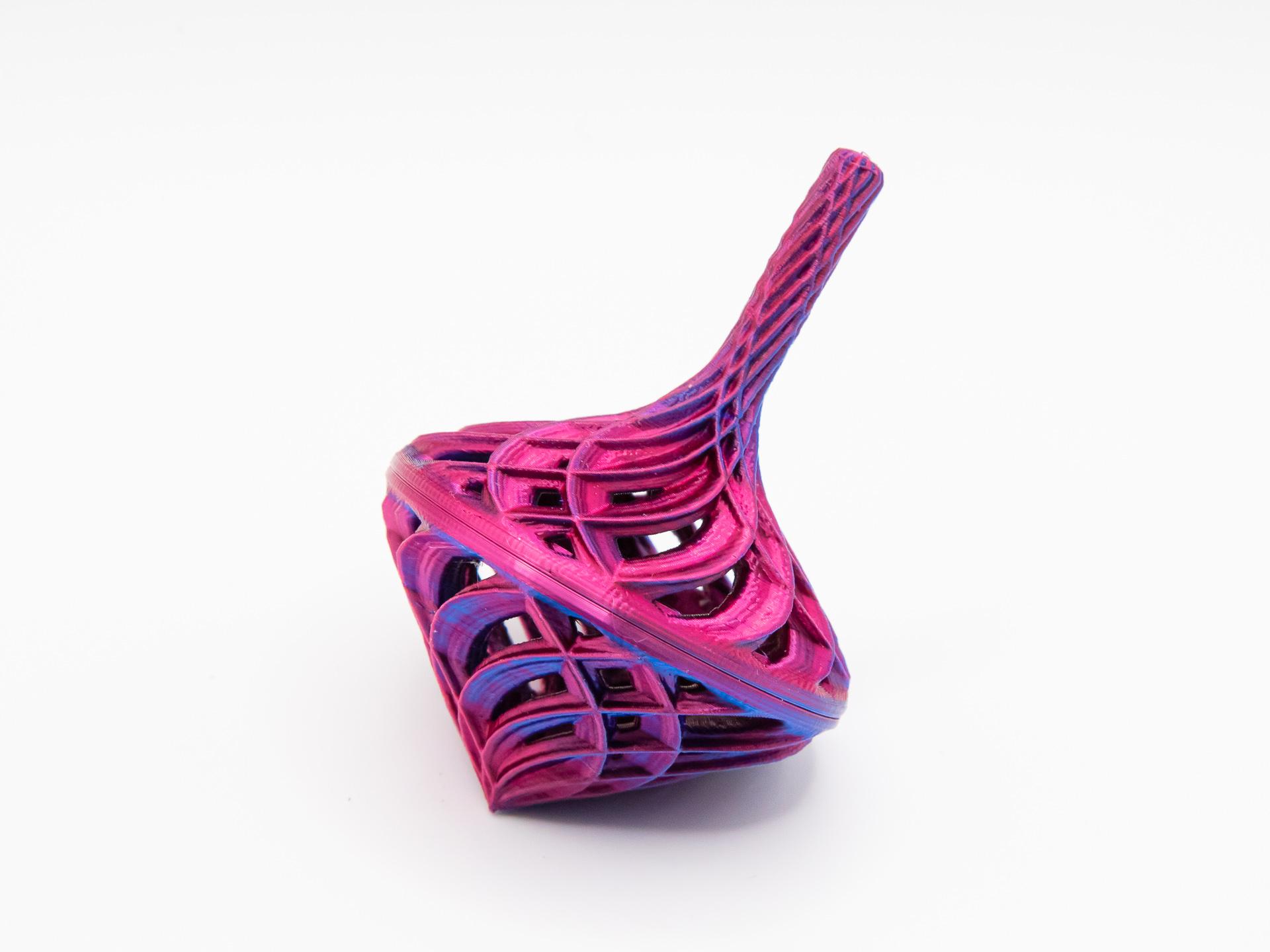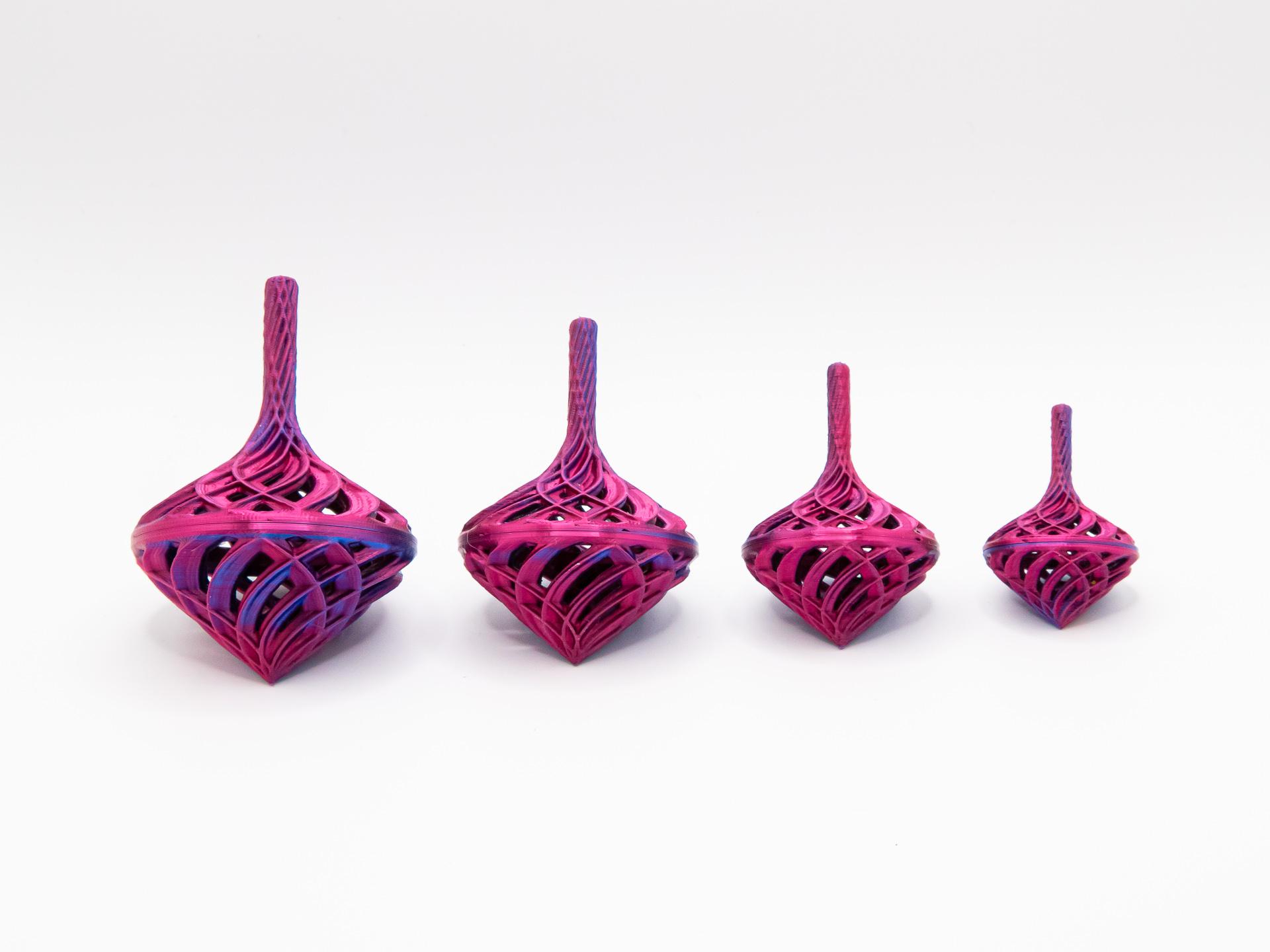Counterswirl Top - Generation 2
This is a new take on my Counterswirl Top. The original top had 2 arms twisting clockwise and 10 arms twisting counterclockwise. This has 3 and 12, which increases the mass and lessens the impact of small irregularities or alignment issues. It spins beautifully at any size from 100% to 55%.
Not for commercial use. Please see license agreement.
Want to show off your top? Download my Display Stand for Tops. It prints in as little as 10 minutes!
To get the stem of the 55% to print well, I created a new version of the STLs with thicker stems. I also added GCODE to my 3MF file to drop the print head temp down to 177 at 10.50 mm. That worked really well, but I also found that printing two at once improves the print quality of the stem even more. So, the 3MF and GCODE files I've provided for 55% include pieces for 2 tops.
If you want to print the 1 piece top, I'd suggest doing it inverted with the provided support collar. It goes around the stem and keeps the top from wobbling while it prints. The collar breaks away easily once the print is done if you get it adjusted right for your printer. I tried this technique with another of my tops and it worked OK, but the final print quality was pretty rough on top and it didn't spin better. It also took a lot longer and required more filament. Still, if you want to print the top as one piece, I recommend using the stem and printing just the first 30mm (takes about 45 minutes). While the print is still on the plate, try moving the stem sideways to see if it has give. Then, remove it from the plate and the collar and see if it was too tight. Then, scale the collar up or down as needed (probably no more than 0.5 - 1%).
This is a great design for 2 or 3 color filament, rainbow filament, or adding color changes by swapping filament.
Print Settings
If you don't use my 3MF file, I suggest you set perimeters to 11 (yes, really) and infill to 100%. The tops need the mass to spin well.
Also, print external perimeters first. I couldn't explain why, but they are a lot smoother if you print the outside first.
I added grid supports with an overhang angle of 50 degrees.
Filament
If anyone's curious, I used MatterHackers Quantum Blue Raspberry.







